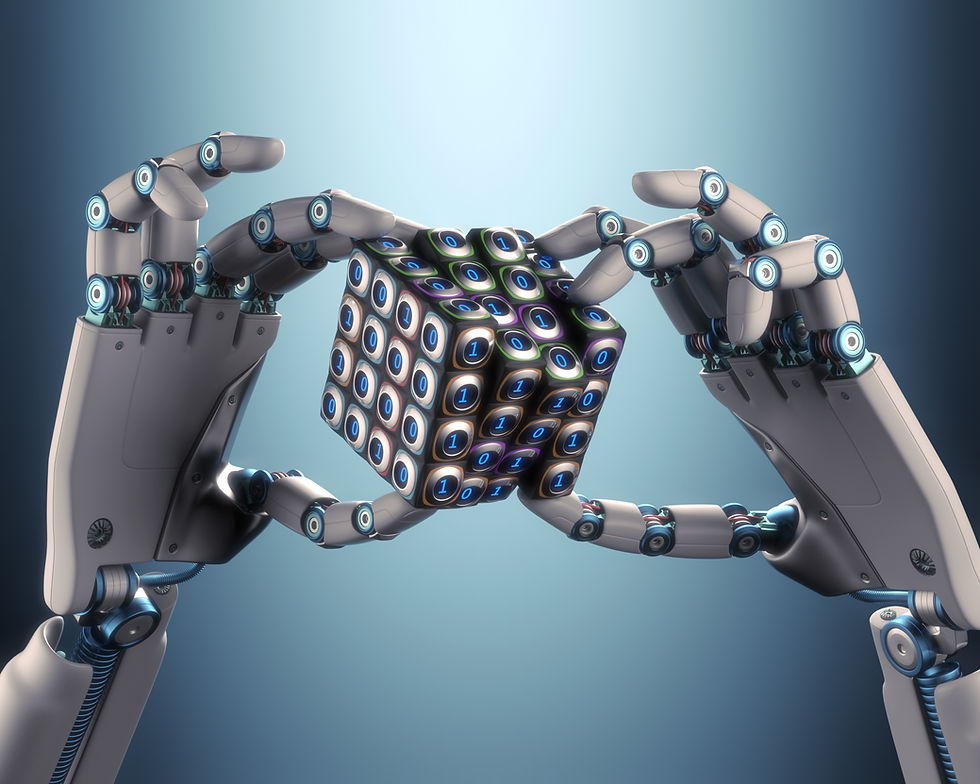Introduction to Reinforcement Learning Methods
- vazquezgz
- Oct 8, 2023
- 3 min read
Updated: Mar 4, 2024

Reinforcement Learning (RL) is a subfield of machine learning where agents learn to make sequences of decisions by interacting with an environment. The agent takes actions to maximize a cumulative reward signal over time. It's widely used in various applications, from robotics to game playing, and has gained popularity due to its ability to handle complex, dynamic environments.
Overview of Common Reinforcement Learning Methods
Q-Learning is a model-free, off-policy RL algorithm. It learns an action-value function Q(s, a) that estimates the expected cumulative reward when taking action 'a' in state 's'. It uses the famous Q-learning update rule to iteratively improve its estimates.
where:
where r is the reward received when moving from the state s to the state s', and α is the learning rate (0< α ≤1).
Example: Q-learning has been used in training agents to play games like CartPole and Atari 2600 games.
DQN is an extension of Q-learning that utilizes deep neural networks to approximate the action-value function. This enables handling high-dimensional state spaces.
Example: DQN was used to achieve superhuman performance in playing games like Atari's Breakout and Space Invaders.
Policy Gradients are a class of model-free, on-policy RL algorithms. Instead of estimating action values, they directly optimize the agent's policy to maximize expected rewards.
Example: OpenAI's Proximal Policy Optimization (PPO) algorithm has been used to train agents in various environments, including robotics and game playing.
Actor-Critic methods combine aspects of both value-based and policy-based approaches. They have an actor network that suggests actions and a critic network that evaluates those actions.
Example: Trust Region Policy Optimization (TRPO) is an actor-critic algorithm that has been applied to tasks such as robotic control.
DDPG is an actor-critic algorithm designed for continuous action spaces. It uses a deterministic policy and a Q-network to estimate the action-value function.
Example: DDPG has been used in training robotic arms for tasks like picking and placing objects.
A3C is a distributed RL algorithm that utilizes multiple actors and learners to improve training efficiency.
Example: A3C has been applied to train agents in various environments, including playing board games.
How These Methods Work and Their Advantages/Disadvantages
Q-Learning:
How it works: Q-Learning iteratively updates Q-values using the Bellman equation. It's easy to implement and well-suited for discrete action spaces.
Advantages: Simplicity, efficient for small state spaces.
Disadvantages: Doesn't handle large state spaces well, slow convergence.
DQN:
How it works: Utilizes deep neural networks to approximate Q-values. Experience replay and target networks stabilize training.
Advantages: Handles high-dimensional state spaces, improved stability.
Disadvantages: Can be sensitive to hyperparameters, can suffer from overestimation bias.
Policy Gradients:
How it works: Directly optimizes the policy by gradient ascent on expected rewards.
Advantages: Handles continuous action spaces, can learn stochastic policies.
Disadvantages: High variance, slow convergence.
Actor-Critic Methods:
How it works: Combines policy and value function learning for improved stability and convergence.
Advantages: Balances exploration and exploitation, handles continuous action spaces.
Disadvantages: More complex to implement, sensitive to hyperparameters.
DDPG:
How it works: Utilizes a deterministic policy and a Q-network for continuous action spaces.
Advantages: Handles continuous action spaces, stable training.
Disadvantages: Can still suffer from overestimation bias, needs careful hyperparameter tuning.
A3C:
How it works: Uses multiple actors and a central critic for efficient parallelized training.
Advantages: Faster training, good scalability.
Disadvantages: Complex setup, communication overhead.
In conclusion, reinforcement learning methods offer powerful techniques for training agents to make sequential decisions in various domains. The choice of the method depends on the problem's characteristics, such as the state and action spaces. Each method has its advantages and disadvantages, making it important to select the most suitable algorithm for the task at hand.
Commentaires